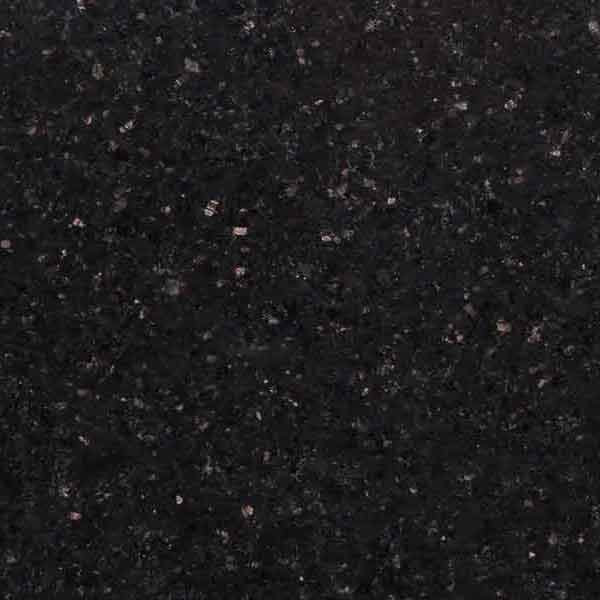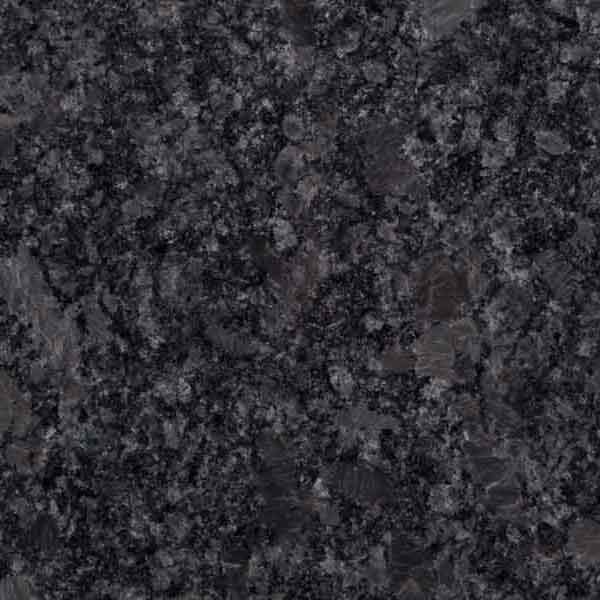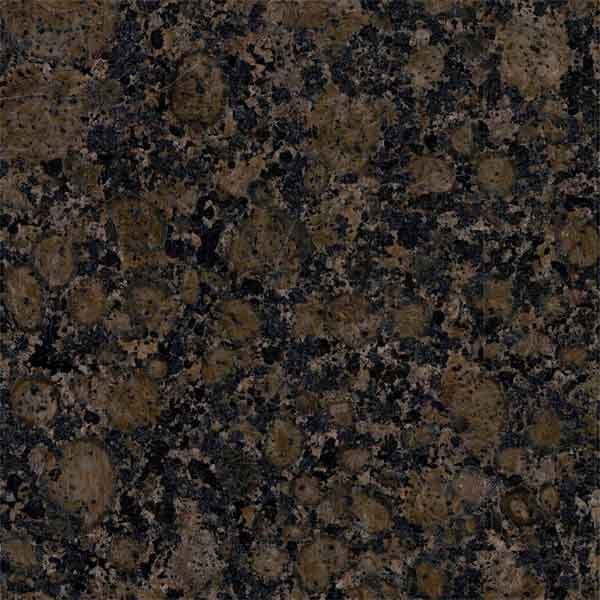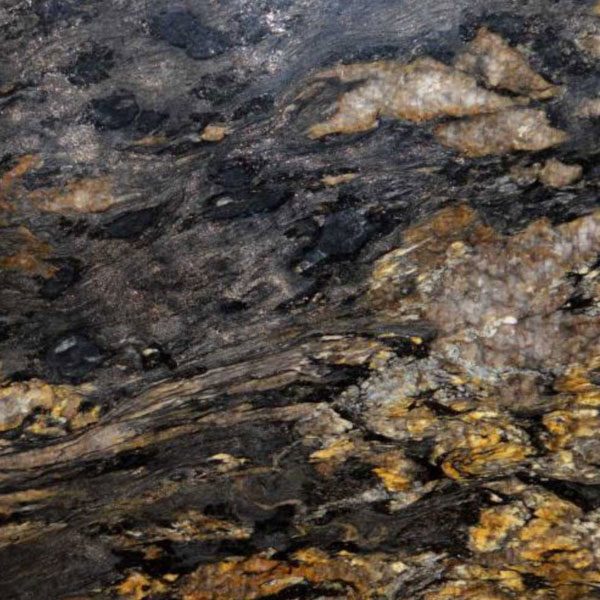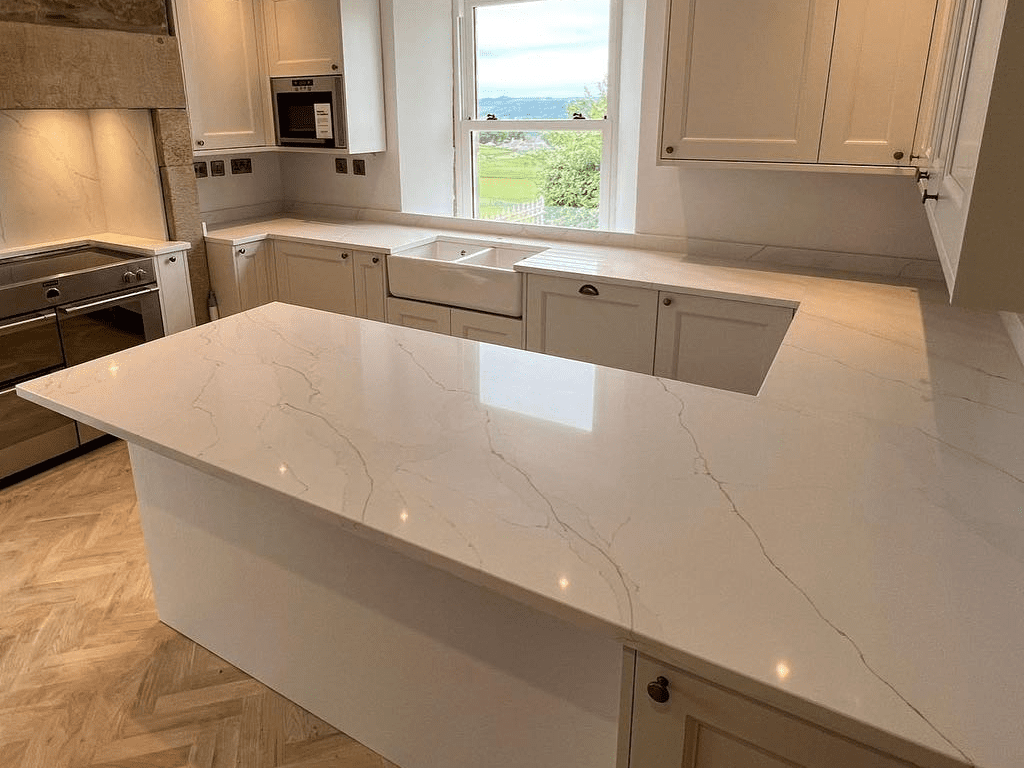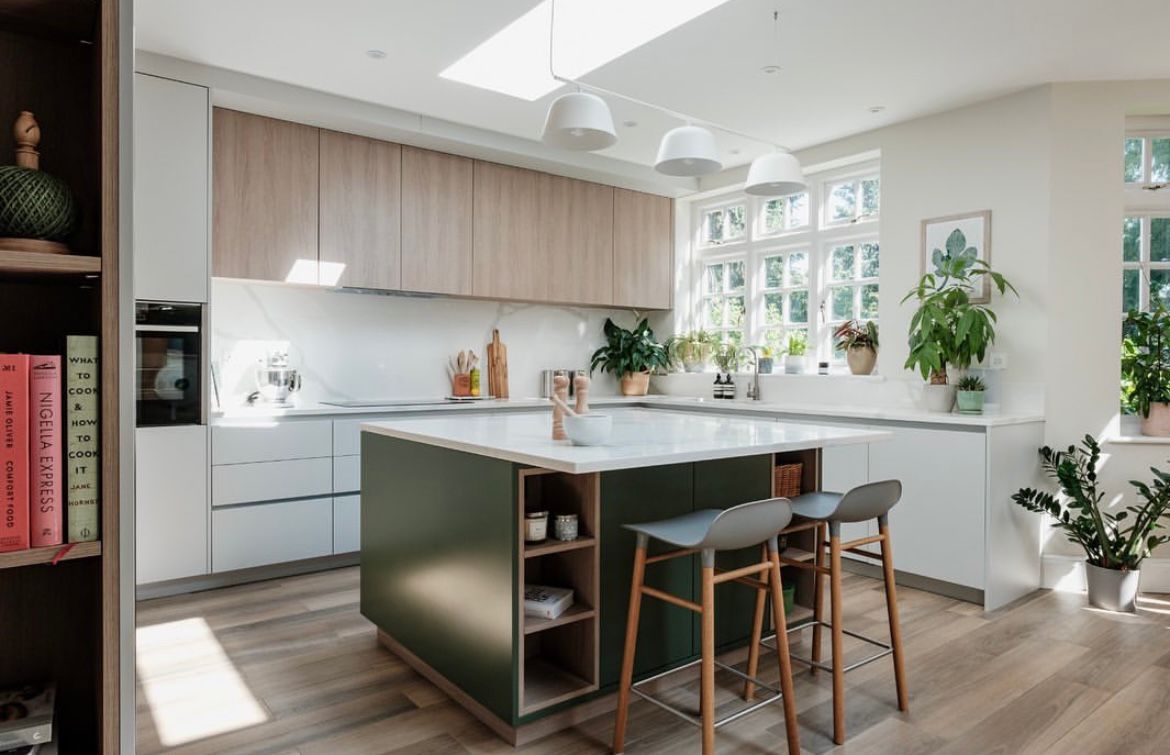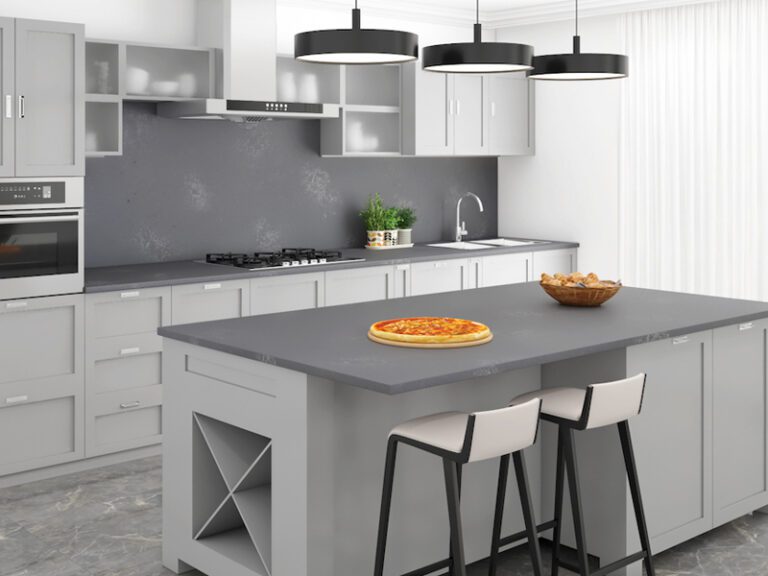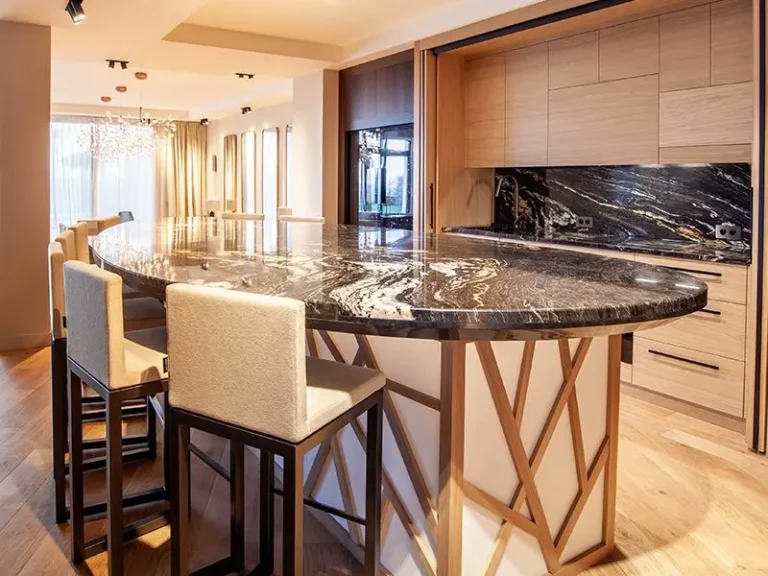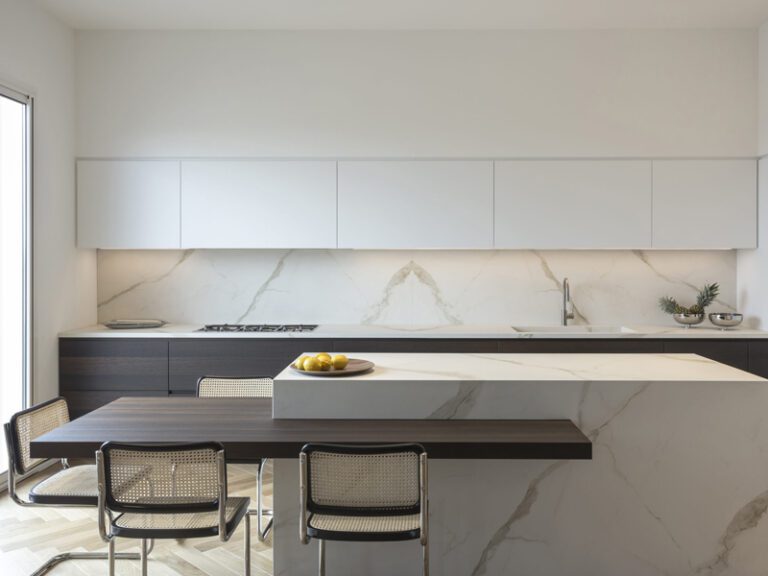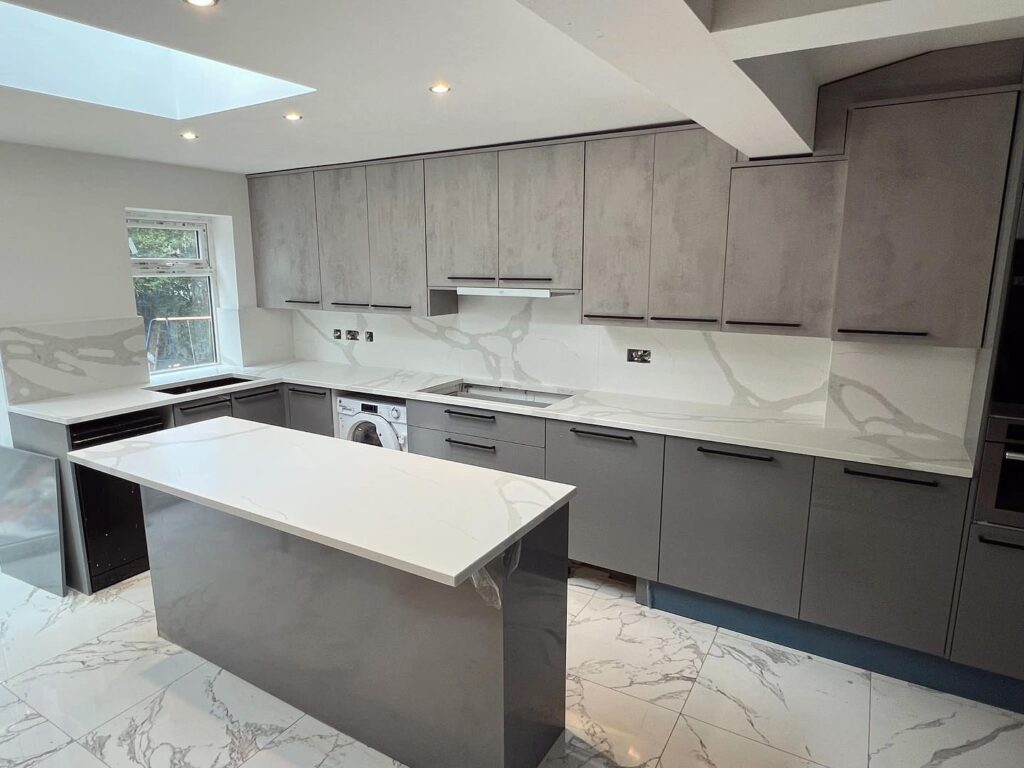What is Granite?
Granite is composed of quartz and feldspar with particles of mica, amphiboles, and other minerals. Every slab is absolutely unique and timeless and adds a real wow-factor to any kitchen, bathroom or fireplace. Not only does it look beautiful, many love granite because of its resistance to heated pots and pans and how easily it can be cleaned. Take a look at our wide selection, from premium black granite to striking cosmic black and steel grey and be sure to order a sample.
How To Care For Granite Kitchen Worktops
The price of granite kitchen tops means they are often a long-term investment for homeowners. As such it’s worth knowing about their care and maintenance. Granite can be chipped and scratched by improper use. It’s also porous bringing a risk of staining.
To help prevent issues, we’ve prepared some top tips on how to care for granite kitchen worktops.
General Worktop Usage
There are lots of ways you can help keep granite worktops in pristine condition. We’re sometimes asked – can you cut food on granite? We always say no. Use a chopping board to avoid cuts and scratches. If knocked or hit too hard granite can chip too, so take care with heavy items and DIY nearby. Very hot pans need a trivet or safety mats for them. Do granite countertops crack easily? Not easily, but granite can crack at cutout weak points so you should never stand or kneel on your worktops.
Cleaning Granite Worktops
For basic cleaning, we recommend Lithofin Easy-Clean which is great for daily cleaning. For a deeper clean for stubborn stains use Lithofin PowerClean. Always read the instructions on how to use either of these products prior to use. Whilst there are certainly plenty of other products out there which may be suitable, Granite Zone doesn’t recommend any other cleaners other than those stated above. Use of any other products may invalidate your warranty if such products contain potentially damaging ingredients. These can include abrasives such as bleach (like Cilit-Bang), acids (even mild) or alkalis (including oils) – please note, this is not an exhaustive list either. We’d also strongly recommend refraining from using scouring pads too; if you cannot shift a tough stain, please seek expert advice before cleaning to avoid permanent damage.
Avoiding spillages
To avoid damage to your granite kitchen work surfaces you must ensure that any spillages are cleaned up quickly. Spillages such as orange juice, blackcurrant, fizzy drinks, cordials, coffee, wine, butter, etc left for even a few minutes may cause staining (etching) on the worktop surfaces.
Both acidic and alkaline substances can cause permanent damage and should be avoided on the surface of your granite. Pay particular attention to substances such as oil, bleach, red wine, citrus fruit juice, cola, berries, beetroot, saffron, blackcurrant and vinegar which will cause etching.
Sealing
To prevent staining on your granite worktop we highly recommend the use of a sealant. Granite worktops installed by Granite Zone will always be sealed. We also recommend re-sealing your worktops about once a year, however very frequently used worktops should be sealed more regularly.
Repairs
Etched or stained worktops can often be repaired depending on the severity of the etch. In many cases, it can be professionally repaired and, in many scenarios, repaired by yourself. Whilst we do not endorse self-repair, it is much more cost-effective.
How long will granite countertops last? If they’re looked after well, the answer is a lifetime.
Please note: The above is for information purposes only. Granite Zone accepts no responsibility for any damage caused by attempts to restore worktops using the above methods. If in any doubt, please consult an expert first.
Is Quartz Or Granite Better For Worktops
If you’re considering a new stone kitchen worktop, you’ll find a wide range to choose from, which vary wildly in price. Both granite and quartz worktops were once exclusive purchases with premium price tags, but now the importation of these beautiful materials from India, China and elsewhere around the world, makes these desirable products much less expensive.
We are often asked about the differences between Granite and Quartz. Essentially, it comes down to taste as there are differences in the way each will look in your home. There are also key differences in the way they’re sourced and produced, the way you need to look after them and of course, the price tag.
Where Is Granite For Kitchen Worktops
Sourced From?
As granite is a natural product, it can be sourced from all over the globe. Granite stone is a rock formation that has been formed over billions of years under the ground. Sadly, certain varieties of granite will therefore ultimately
run out once mining has reached its limits.
Unlike Granite, Quartz Is Man-Made
Quartz worktops are made from natural coloured quartz that can be mined from the ground naturally. The blocks of quartz that form kitchen worktops are formed by machines that combine crushed quartz with resins, glues and enhancers. Producing a consistency of 93% crushed quartz and 7% bonding agents, the process that quartz undergoes to form a solid surface is called Vibro-compaction. This process also allows for the addition of some rather remarkable extras, which can’t be added to natural stone. These extras can give a beautiful and unique finish to the look of your kitchen worktop.
Variety of Granite Stone
There are easily over 200 varieties of natural Granite ranges available for sale in the UK. The most common ranges in the UK are
- Star Galaxy, Baltic Brown and Black Pearl from India
- Absolute Black from India, Africa and also China
- Emerald Pearl and Blue Pearl from Norway
Which granite is best for a kitchen countertop? It will depend on your style and preferences.
Differences In The Look of Quartz vs Granite Worktops
The finished look offered by both granite and quartz kitchen worktops is elegant and stunning. What is the difference between granite and quartz, then? Each stone has different properties and the surface you choose should depend on the finish you would like to achieve. Granite worktops offer a variety of finishes from traditional to modern, which can be determined by the colour you choose. The most popular granites are black; offering a simple contemporary finish with modern Shaker-style units. Pearl granites are also ideal for a clean yet traditional look.
If you’d like a more modern finish, quality quartz is the way to go. If you’re planning on getting slab doors, ie flat cupboard doors which don’t have any frames or panels, a quartz worktop is highly recommended for these too.
There are a few exceptions to the rules in both cases; Grey Naturale quartz offers a fairly traditional finish, whilst Absolute Black can produce a modern granite worktop.
Durability of Granite and Quartz
Both quartz and granite kitchen surfaces are very tough and hard-wearing. In most cases you won’t experience any problems with durability, making either choice a high-value investment. You may well read that granite worktops are more susceptible to stains than quartz, but that’s only true if not correctly looked after.
Quartz v Granite Worktops
Is quartz or granite better? It will depend on your preferences. Quartz is man-made by mixing ground quartz crystals with resins, glues and enhancers. It allows for more modern, creative design. Granite stone is a wholly natural, mined material. It is the more traditional choice. The choice is yours.
Granite Slab Size
Granite is a natural material and so sizes vary depending on the blocks available. It’s always best to ask about size even before planning your kitchen. You may find long sizes for extra large granite kitchen tops will restrict your colour options.
Solid Granite vs Granite Overlay Worktops
There are two main options for those wanting a granite kitchen worktop – granite overlays or solid slabs of granite.
For the purpose of this overview, granite refers not only to pure granite itself but to the related engineered quartz stone with has very similar properties (see above for an overview of their key differences). Granite overlay stone will also be referred to as granite due to its mixture of granite, quartz and stone and its overall high-quality granite appearance.
Solid Granite Worktops
A ‘real deal’ granite worktop option consists of slabs of pure granite stone cut to size, polished and routed to fit your sinks, hobs and taps. In the UK, the standard thickness of solid granite for worktops is 3cm, with thinner 2cm slabs used for upstands and splashbacks.
Solid granite is a completely dense material and for some consumers, that perception matters. On the surface (pardon the pun) you probably won’t be able to tell the difference between the solid and overlay granite, although some will argue that if the worktop has a 4cm thick finish it’s a dead giveaway it is not solid.
Granite Overlay
A granite overlay for countertops utilises a much thinner layer of granite (typically 12-15mm) which is fitted over your existing worktops or placed on timber board, or batons when used in new installations. The sides are then glued to the worktops at 45-degree mitres giving a standard 40mm thick finish. The finished look is still just as premium, less stone is required.
Granite overlay suppliers usually offer around 50 designs to choose from. Popular overlay ranges that we stock include Star Galaxy, Absolute Black and Starlight Mirror.
Overlay material is very similar to engineered quartz stone which is manmade and not a natural stone. For this reason, solid granite (that’s actual granite and not quartz) does have a noticeable deeper shine and shimmer.
Installation of both solid granite and granite overlay can be somewhat messy. For both jobs, surfaces must be measured and all hobs/sinks/taps must be disconnected and removed – yes, even for the overlay approach. The main difference between solid granite and overlay installation is the physical removal of the existing worktops when adding solid granite. It’s not a complicated process but these surfaces all need to be unscrewed and removed.
From then on the installation processes pretty much merge. Worktops are cut, polished and fitted in place before being joined and then re-plumbed.
With no old worktops to remove, the granite overlay option is the one to choose when looking for an installation process that’s a little less messy. In terms of speed, both forms of granite
worktops require a 3 step installation process:
Step 1 – measuring up, onsite surveying
Step 2 – temporarily removing taps/sinks/hobs and preparing worktops (cut and polish)
Step 3 – final installation of the worktops
Installation of granite overlay will always require the 3-step process as above, however with solid installation the process can sometimes be achieved in a single visit installation with the process from start to finish completed in just 1 day.
This involves a combination of pre-processing and on-site processing, however, the finished article is the same as if it were surveyed. There is little difference in the speed of installation between solid granite and granite overlay. Although with solid granite there are now a lot of on-site installations taking place, with a turnaround in just a day.
If you want to compliment your granite worktops with optional extras; under-mount sink cutouts, breakfast bars and radius corners can be achieved with both solid and overlay granite. Other additional features that can be realised with both types of granite include upstands, splashbacks and window sills.
An interesting difference is that you cannot have a rounded or bullnose profile with the overlay solution. This is because rather than using solid materials, the worktops are made using a downstand. On the flip side, worktops that look deeper can be easily completed with overlay solutions. This is something that can be achieved with solid granite but at additional expense and time.
If you have a special requirement, please get in touch with your dimensions. We will be happy to help with a quotation.




